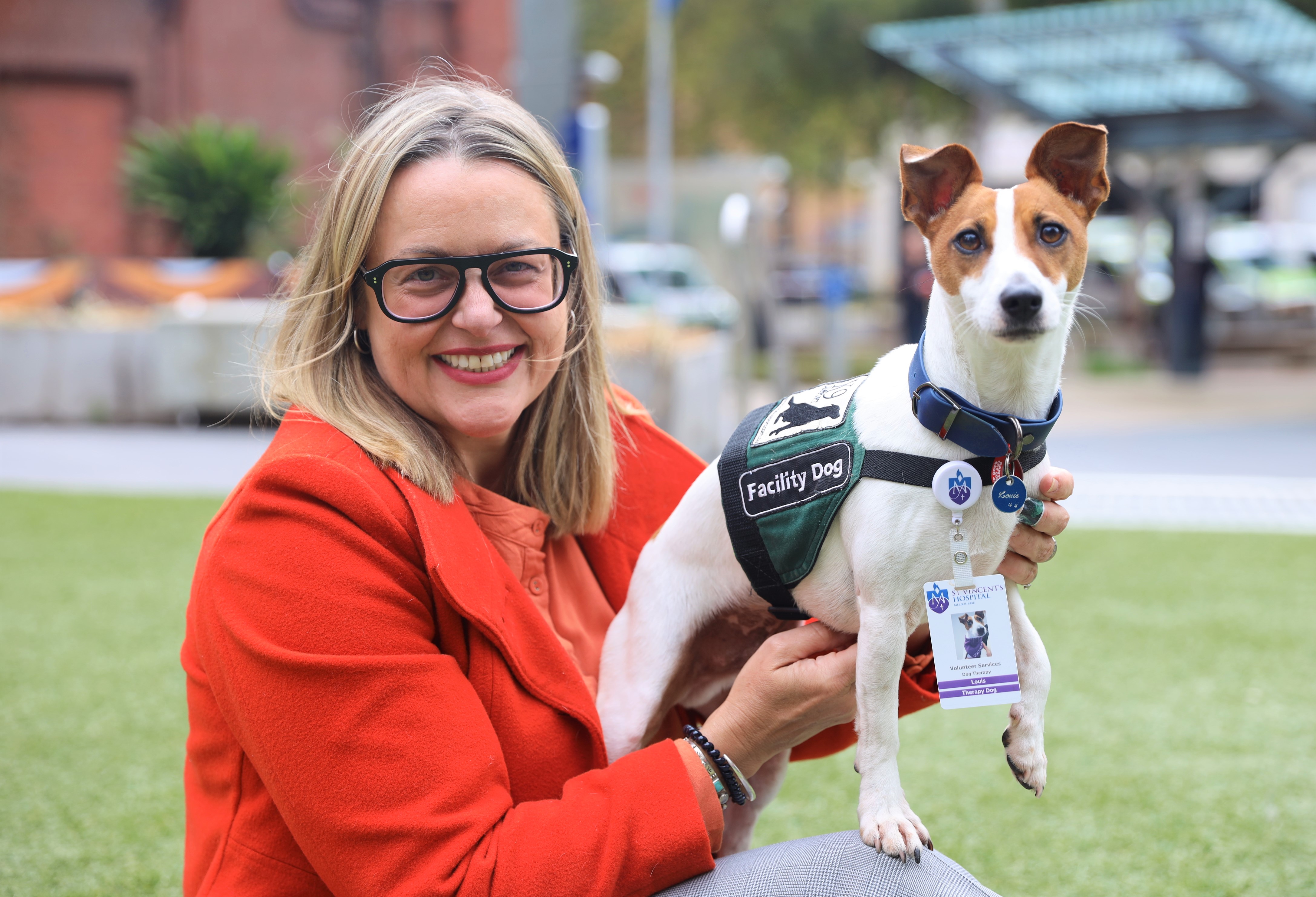New program helps support older adults experiencing mental health distress

Pictured: Tanya Cottrell and Louis the therapy dog
A pint-sized Tenterfield Terrier and volunteer aid at St Vincent’s Hospital Melbourne is helping improve the lives of older adults challenged by mental illness, thanks to a new dog therapy program.
Five-year-old Louis is part of the Canine Assisted Therapy (CAT) program developed by St Vincent’s Hospital Melbourne’s Healthy Ageing Service. It is the first time a hospital-run mental health service has offered this form of therapy as a treatment option in Victoria.
Operating since November last year, the CAT program provides much-needed support to people over 65 living in Melbourne’s Eastern and Northern regions who have been referred to St Vincent’s Healthy Ageing Service for brief mental health intervention.
“Louis is such a natural with the people we see. He is great at helping patients and clients feel relaxed and more comfortable when speaking with a clinician about their mental illness,” said Tanya Cottrell, Manager of St Vincent's Healthy Ageing Service, and the proud owner of Louis.
CAT sessions take place either weekly or fortnightly, depending on an individual’s level of need, and can last up to three months. The one-hour long sessions are conducted in an individual’s home or at the aged care facility where they reside.
The different techniques used during these sessions include psychotherapy, behavioural activation, sensory modulation and reminiscence therapy.
"Half of our residents living in aged care are experiencing depression, and many are anxious as well,” said Tanya.
“Loneliness is a big problem in aged care, which is even worse after the COVID pandemic. We offer mental health support to more than one third of Melbourne’s older adult population, which includes more than 200 aged care facilities.”
Building trust and connection
During a CAT session, an individual would spend time with Louis patting him as they talk about their emotional experiences with the clinician, while other activities used to help stimulate conversation include going for a walk together and throwing a ball for Louis to retrieve.
“The activities help build a connection between a patient or client and the clinician, and also strengthen that connection as time goes on. It enables them to feel calm and safe during this period and assists with the therapeutic approach towards improving their mental health,” said Tanya.
The Healthy Ageing Service team has found some clients and patients may start reminiscing about their personal experiences with their pet dogs, which then opens up other conversations around their mental wellbeing and enables the clinician to help them navigate and overcome barriers that may be contributing to their distress.
“We have seen first-hand how Louis’s presence can bring the level of anxiety arousal down. It is a very meaningful and beneficial form of therapy,” said Tanya.
Louis has become a key member of St Vincent’s Healthy Ageing Service and even has his own ‘staff ID’ badge and a cosy bed in the office.
“Our staff love the positive impact he is having – how he helps to bring a smile to the faces of the people we see through our service, and comfort them as they struggle. He also makes them laugh a little, and that can be a very important step forward,” said Tanya.
- This Healthy Ageing Service is supported by Eastern Melbourne Primary Health Network.